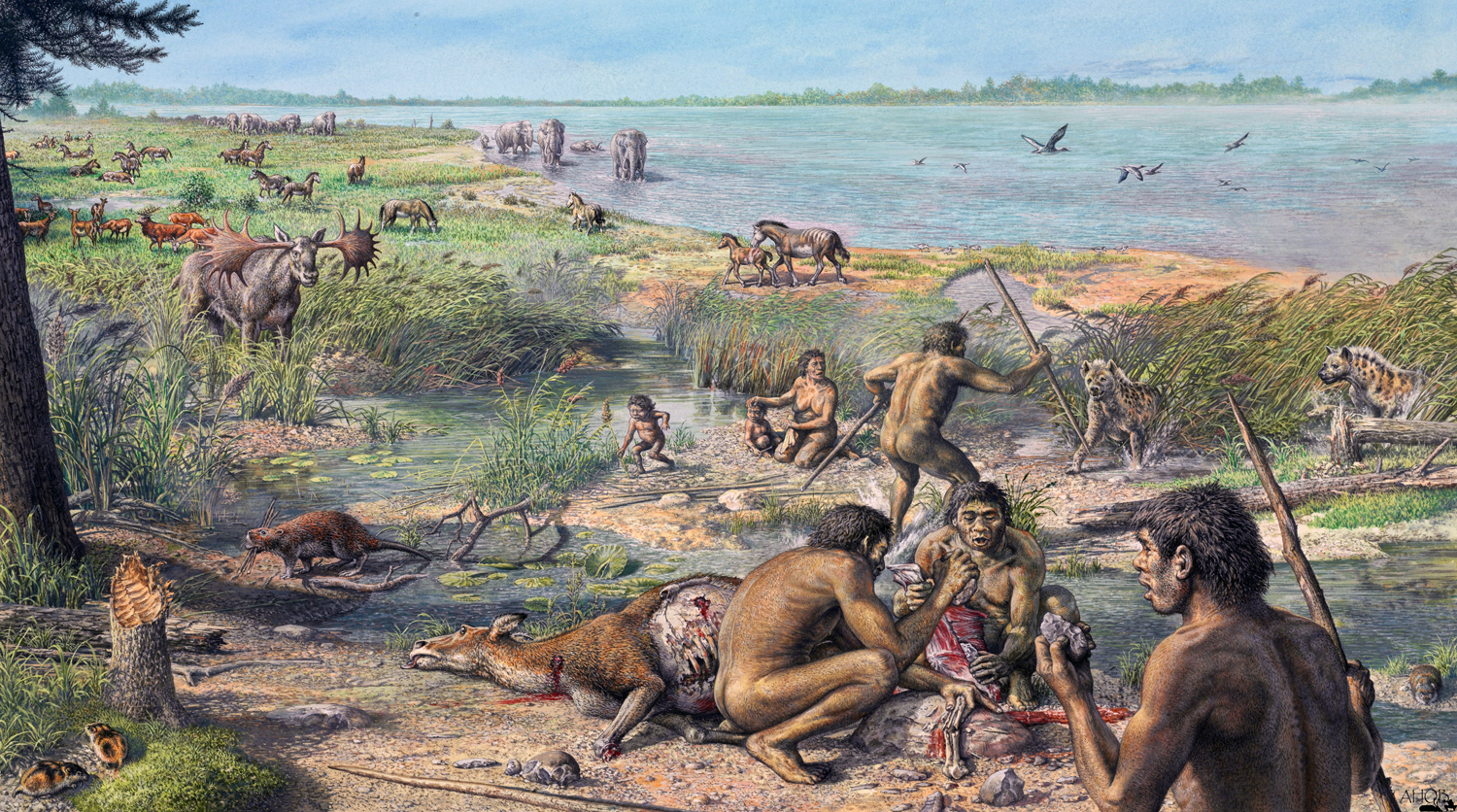 |
Happisburgh
|
|
|
 Recent coastal erosion has nearly obliterated the village of Happisburgh (pronounced ‘Haze-burra’) in Norfolk, but has exposed ever larger areas of the glacial and interglacial deposits that make up the northern East Anglian seashore. The discovery of a flint hand axe by Happisburgh resident Mike Chambers and of butcher marks on bison bones collected there more than a century ago reveal that humans lived there along a forested river bank. Several sites are known at Happisburgh. Site 1 is at least 500,000 years ago, clearly older than the Anglian glaciation and may, according to Jim Rose, belong to the interglacial preceding an even older glaciation that Rose has dubbed the Happisburgh advance. If so, then the site could be older than 700,000 years. Site 3 is between 700,000 and 950,000 years old, containing the oldest evidence of human occupation of northern Europe at a time when the climate was similar to today. Read about Happisburgh Site 3 occupation in Nature: Parfitt et al., 2010. Early Pleistocene human occupation at the edge of the boreal zone in northwest Europe. Nature,466: 229-233. http://dx.doi.org/10.1038/nature09117 Roberts, A.P. and R. Grün. 2010. Early human northerners. Nature, 466: 189-190. http://dx.doi.org/10.1038/466189a Visit the Happisburgh site website: http://www.britishmuseum.org/research/research_projects/happisburgh.aspx
|
| (c) 2009, Ancient Human Occupation of Britain Project |  Questions: e-mail pdpolly@indiana.edu |
